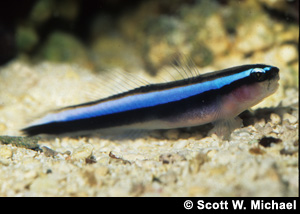
Gobiosoma oceanops
FAMILY
Gobiidae
TAXONOMY
Elacatinus oceanops Jordan, 1904, Garden Key, Tortugas,
Florida.
OTHER COMMON NAMES
English: Blue neon goby.
PHYSICAL CHARACTERISTICS
Small, slender goby with an pointed, bulbous snout. Maximum
length about 2.4 in (6 cm). Has two dorsal fins and a squareshaped
caudal fin about the same height as the body. The
pelvic fins are joined to form a cuplike sucking disk. Dorsally
the fish is dark, with an iridescent pale blue stripe running laterally
along the lower edge of the dorsum, extending from the
snout to the caudal fin. This lateral streak in fishes from Belize
is blue in the middle bordered by white. The underside of the
head and the abdomen are pale.
DISTRIBUTION
Southern Florida, the Flower Garden coral reefs 100 mi (161
km) off the Texas-Louisiana border, Alacran Reef of northern
Yucatбn, Quintana Roo state (Yucatбn peninsula of Mexico),
and Belize.
HABITAT
Inhabits coral reefs and tropical rocky substrates at depths
from 3.3 to 131 ft (1–40 m). Has also been observed associated
with large sponges.
BEHAVIOR
Rests on coral and withdraws into crevices when threatened. A
cleaner goby that picks parasites off other fishes, the male
cleans the undersides of rocks, corals, or shells to prepare the
surface for eggs.
FEEDING ECOLOGY AND DIET
This is a cleaner goby that picks parasites off other fishes. As
with other cleaner gobies, this species waits for other fishes at
stations on top of coral heads. It will then swim along the fish
and remove ectoparasites from its skin. Its diet includes parasites,
fish scales (perhaps accidentally removed), and benthic invertebrates.
Larvae feed on small plankton.
REPRODUCTIVE BIOLOGY
Males clean the undersides of rocks, corals, or shells to prepare
the surface for eggs. The male swims in front of the female
and entices her into the shell or crevice. Spawning occurs with
the male and female quivering side-by-side, depositing the eggs
on the ceiling of the nest. Individuals can spawn multiple
clutches, several times within a month. The eggs are about
0.08 in (2 mm) long, and 0.04 in (1 mm) wide. About 300–450
eggs are deposited in a nest about 0.5 sq in (3 sq cm). The pair
remains together while caring for the eggs. The male guards
the nest and presumably circulates oxygen-rich water over the
eggs, using his pectoral and caudal fins. Eggs hatch in 7–10
days. Larvae are 0.16 in (4 mm) at hatching, and the parents
do not care for the fry.
CONSERVATION STATUS
Not threatened.
SIGNIFICANCE TO HUMANS
This colorful fish is a popular, nonaggressive aquarium species
that does not require much space. It is commercially important
in the saltwater aquarium trade.
Other popular Animals
Photo Gallery of - Neon goby

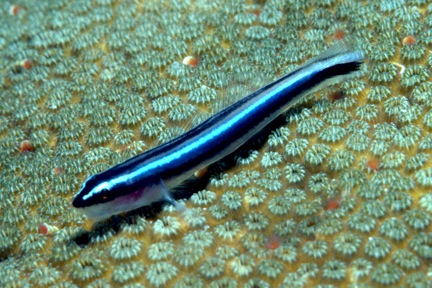
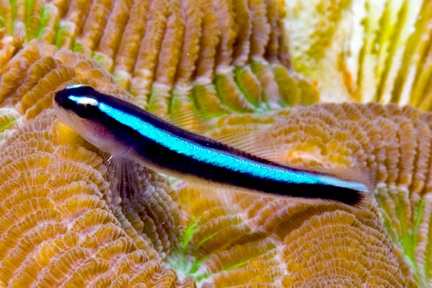
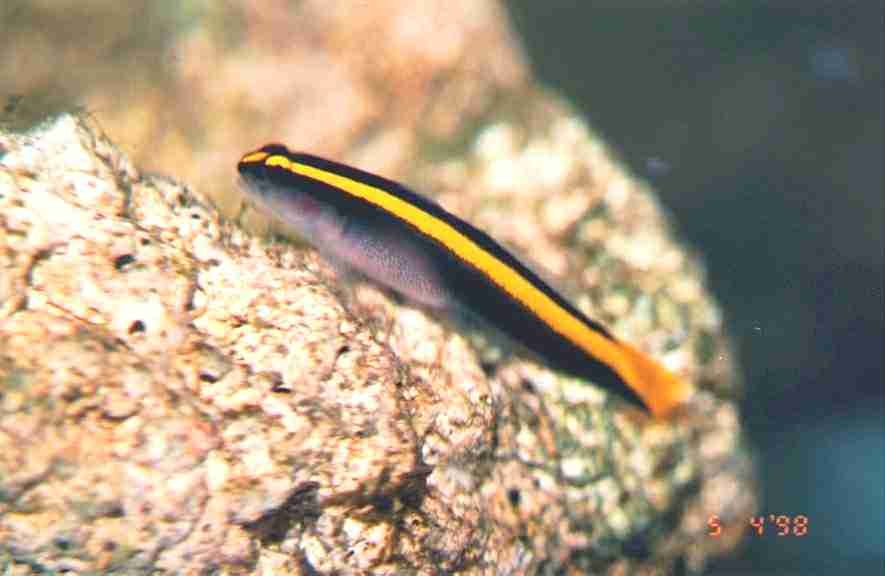
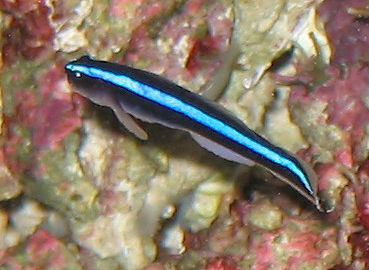
 Animalia Life
Animalia Life